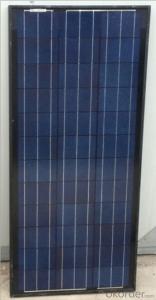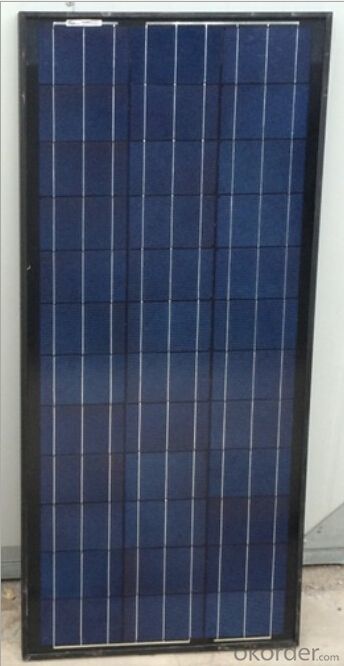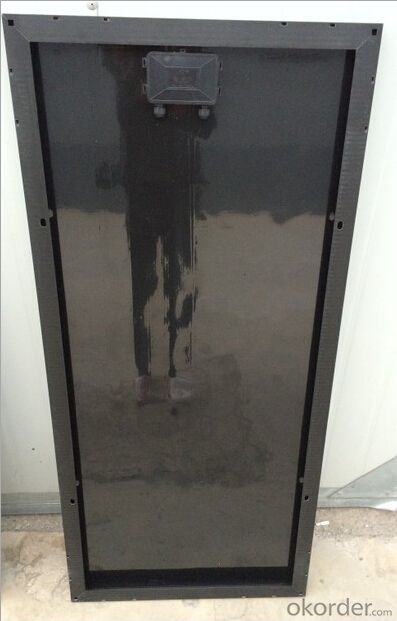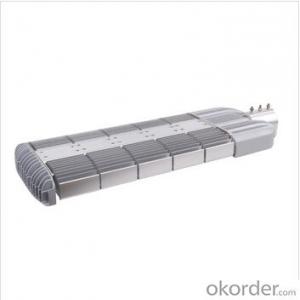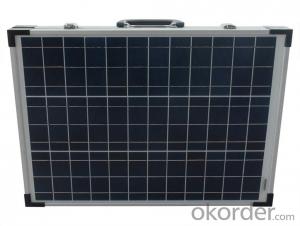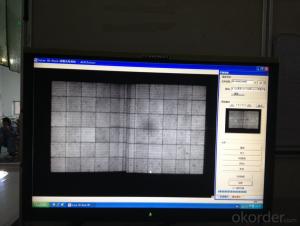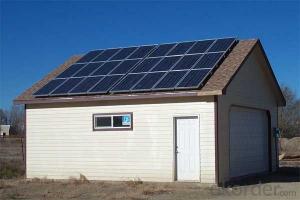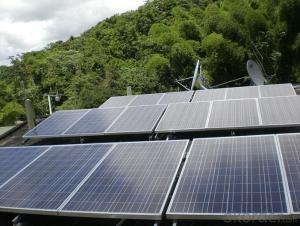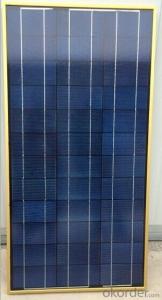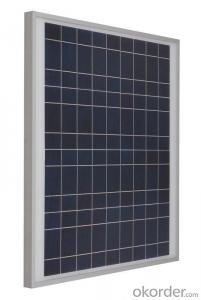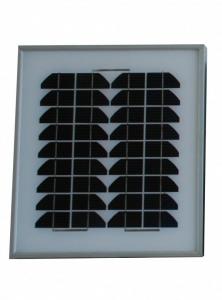Solar Panels Highlands Ranch 100w Poly-Crystalline Solar Modules & Panels
- Loading Port:
- China Main Port
- Payment Terms:
- TT or LC
- Min Order Qty:
- -
- Supply Capability:
- -
OKorder Service Pledge
OKorder Financial Service
You Might Also Like
1.Structure of Solar Module Description
A solar cell module of the present invention was made to improve adhesion between electrodes, which is formed with thermosetting resin containing silver paste, of a solar cell element and connecting tabs coated with lead (Pb) free solder. To achieve this purpose, the solar cell module is comprised of a front surface member, a rear surface protective member, a plurality of solar cell elements provided between the front surface member and the rear surface protective member, and connecting tabs for electrically connecting the solar cell elements to each other through electrodes with the use of lead free solder. The electrodes of the solar cell elements are made of silver paste containing thermosetting resin and silver powder. The thermosetting resin contains epoxy resin at volume ratio of 70% or more having a glass transition rate of 80° C. to 200° C. measured by a TMA method. The connecting tabs coated with lead free solder are soldered to the electrodes.
2.Main Features of the Solar Module
Solar PV module is comprised of some solar cells which are connected in serial with high efficiency and enhanced reliability. The solar cells are laminated between sheets of ethylene vinyl acetate (EVA) and high-clarity low-iron tempered glass.
Solar panel pv module manufacturer
High efficiency: mono panel 18% poly panel 17%
30W-300W mono solar panel poly solar module
Mono-crystalline Solar Panel / Poly-crystalline Solar Panel
We Are Manufacturer
We manufacture mono solar panel and poly solar panel from 30W-300W
We produce Solar PV module from solar cell to solar module
We are capable to produce 2MW solar panels per month
Warranty
5 years material and workmanship warranty
10 years at 90% of the minimal rated power output
25 years at 80% of the minimal rated power output
3.Solar Module Images
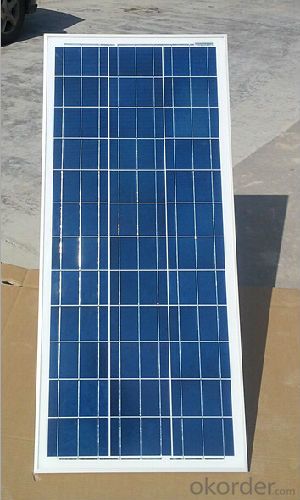
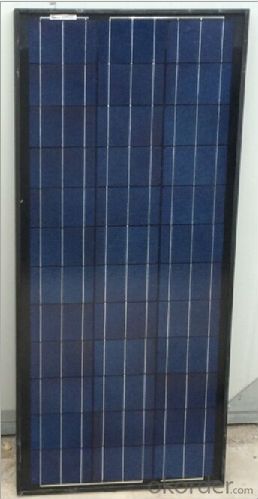
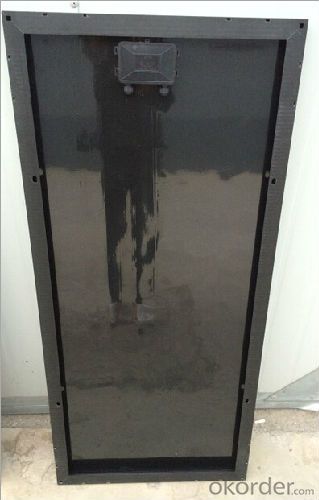
4.Solar Module Specification
Specifications
Electrical Spec. | Pmax | 240W |
Vmp | 35V | |
Imp | 6.86A | |
Voc | 43V | |
Isc | 7.77A | |
Physical Spec. | Cell Material | Poly |
Wind Resistance | 60m/s | |
Surf. Load-bearing | 200kg/m2 | |
Hail Load-capacity | 25mm, 80km/h | |
Packaging Data | Dimensions (mm) | 990*1600*35 |
Weight | 25kg | |
20’ Container | 224pcs | |
40’ Container | 448pcs | |
Temp. Coefficients (TC) | NOCT | 45°C±2°C |
Current TC | 0.06±0.01%/K | |
Voltage TC | -(155±10)mV/K | |
Power TC | -(0.5±0.05)%/K |
Product Details
Advanced EVA encapsulation system with triple-layer back sheet meets the most stringent safety requirements for high-voltage operation
Anodized aluminum frame: The sturdy, anodized aluminum frame allows the modules to be mounted on a variety of standard racking systems and to withstand harshest conditions
Ultra reliable bypass diodes prevent damage through overheating due to shaded or defective cells
Packing method: Innovative, environmentally friendly packing method using pile-edges insures modules arrive in perfect condition
New frame design incorporating hexagonal shaped Drainage holes, with more grounding holes, provide flexible installation and using
Waterproof Battery Box
Waterproof battery box, ideal for high humidity area
Air-bleed vent design, specially for gel and lead acid battery
High strength: PVC plastic box and wire reinforced PVC conduit
5.FAQ of Solar Module
1. Q: Do you have your own factory?
A: Yes, we have. Our factory located in Jiangyin city, jiangsu province.
2. Q: How can I visit your factory?
A: Before you take off from your country, please let us know. We will show you the way,or arrange time to pick you up if possible.
3. Q: Do you provide free sample?
A: Usually we do not offer free sample
4. Q: Could you print our company LOGO on the nameplate and package?
A: Yes, we can do that.
5. Q: Do you accept custom design on size?
A: Yes, if the size is reasonable.
- Q: How do solar panels affect the electrical grid?
- Solar panels can have both positive and negative impacts on the electrical grid. On the positive side, solar panels help to reduce the demand for electricity from the grid, especially during peak hours when electricity is most expensive. This can lead to cost savings for the grid and reduce the need for additional power plants. Additionally, solar panels generate clean, renewable energy, which helps to reduce greenhouse gas emissions and combat climate change. However, the intermittent nature of solar power can pose challenges to grid stability and reliability. Fluctuations in solar energy production can create imbalances in supply and demand, requiring grid operators to carefully manage and integrate solar power into the system. Overall, solar panels can be a valuable addition to the electrical grid, but their integration requires careful planning and management.
- Q: Are solar panels worth the investment?
- Yes, solar panels are worth the investment. They not only help reduce electricity bills, but also provide a clean and renewable source of energy. Additionally, they can increase the value of a property and contribute to a greener and more sustainable future.
- Q: Can solar panels be installed on a prison or correctional facility?
- Yes, solar panels can be installed on a prison or correctional facility.
- Q: So how does a solar panel work? Where does the energy get stored in? How much does one cost for a small 2 family home? How much money would we save on electricity?
- In the short, a solar panel is composed of many solar cells...all tied together and in some sort of a frame for mounting. When energy from the sun hits it, it creates a reaction which can feed electricity through leads to a converter system which takes the Direct Current power and converts it into Alternating Current. If you rewire your house for DC products I suppoes you wo'nt need the converter. but most of these systems are retro-fits. Batteries provide back up source to the system when the sun goes down. So solar is converted to electricity through the panel, which goes to your solar system which both provides power to the house and to recharge batteries. The batteries take over when the sun is down. So you will need to know how much battery capacity you need by calculating the Amp hour rating of your applicances that you normally use at night like Microwave, TV, radio, refrigerator, etc. For some depending on the appliance....water heater (if electric) or stove) then you need to figure out how many panels you need to provide your normal daily energy use, figure out how many batteries you need, set up a distribution system that gives you what you need where you want it and wa la. Once done, you will be off the grid and paying nothing from the electrical utility. Some places due to deregulations allow you to sell excess power to local utilities too, but those systems need to meet tight standards.
- Q: Are solar Panels worth it, Do they really quot;save moneyon electricity?
- “Where you have good (sunlight) and access to financing and a combination of federal and state incentives, you have a number of markets around the country that are very vibrant, and it’s very cost-effective with financial paybacks in the order of five and 0 years,” said Robert Margolis, a senior energy analyst at National Renewable Energy Laboratory (NREL).
- Q: Can solar panels be installed on museums or cultural centers?
- Yes, solar panels can be installed on museums or cultural centers. In fact, many museums and cultural centers are embracing solar energy as a sustainable and cost-effective solution for their energy needs. By installing solar panels, these institutions can reduce their carbon footprint, lower energy costs, and demonstrate their commitment to environmental stewardship. Additionally, the installation of solar panels on such iconic buildings can serve as a visual representation of their dedication to renewable energy, inspiring others to follow suit.
- Q: Hey was looking at a 5 watt 2 volt solar panel and was wondering if it'd be enough to power a regular light bulb. Also need to power a 5volt 6.5 amp pump for at most a minute at a time. So basically if I had this panel would I be able to plug a lamp into it and have it light for 5+ hours at a time with the possibility of running the pump? If not what size panel would I need?
- The specifications you give say the solar panel produces 5 watts at 2 volts (DC) so that isn't enough voltage to power an ordinary (20-volt) light bulb. You could get 0 of these panels and connect them in series so they put out a total of 20 volts and the total power available would be 50 watts. The panels would light the bulb that way, provided the bulb isn't over 50 watts and you can afford the panels. A panel does provide enough power for a 2-volt car light bulb less than 5 watts. However, the maximum current you can get from these panels is .25 amperes (5 watts divided by 2 volts = .25 A.) This isn't enough power to run your pump which takes 6.5 amperes - at 20 volts, that would be 780 watts. Another thing to check is the pump motor; many electric motors are designed to run on AC only and will be damaged if you try to run DC through them. Remember solar panels produce DC so the raw output from a panel will not work on an AC motor.
- Q: Can solar panels be installed on tall buildings?
- Yes, solar panels can be installed on tall buildings. In fact, tall buildings are often ideal for solar panel installations as they typically have more available roof space to accommodate a larger number of panels. Additionally, being elevated, tall buildings are less likely to be obstructed by shading from surrounding structures or trees, maximizing their exposure to sunlight and optimizing energy generation.
- Q: how many solar panels in a grid tied system would it take to take see a difference in your power bill?
- Typical solar panels used on household systems generate between 00 and 50 watts each. You might get the equivalent of five hours of sunshine per day on the average. 500 to 750 watt hours per day would be the average output. Where I live that would save only about six to nine cents per day. Learn more about photovoltaic solar systems by searching for solar panels on the Internet, and in the green search box above on this page.
- Q: The inverter I am using gets the required 2 DC volts from the solar panel, but fo some reason it just won't output the 0 AC voltage. When the inverter is hooked to a car battery, it works just fine off the same 2 DC rating. Help me out please...
- There could be a couple of reasons why it isn't working. First, 2V panels actually put out a considerably higher voltage because it is presumed that they will be used to charge a 2Vdc battery. That requires applying a voltage greater than 2Vdc, and usually there is a solar controller that regulates the solar power to the battery. It also has a voltage drop. Look at the first reference reference, and you will see these values for a particular panel: Voc: 2.6V (open circuit voltage) Vmp: 7.2V (voltage at maximum power point) Voc is the voltage the panel produces under standard sunlight and temperature conditions (25°C), with no load applied. As load is applied, the voltage drops (see reference 2). Power is the product of current times voltage, so at one set of conditions (namely at Vmp) maximum power is available from the panel. Your inverter might not be working for either of two reasons: ) it has input protection circuitry that locks out operation when it senses an overvoltage, as in the 2.6V open circuit voltage, or 2) the panel does not produce enough current and the voltage from the panel collapses under excessive load. For example, if you load your inverter to 20W, then nominally the 2VDC input to the inverter must supply 20W/2V/eff = 0A/eff Assuming the inverter has an efficiency of 80%, the input current required is: 0A/.8 = 2.5A A solar panel operating at maximum power would need a rating of about: 2.5A x 7.2V = 25W Is your panel that big? The other option, as mentioned by others, is to charge a battery that runs the inverter. Other nuances: Voc increases as temperature decreases. Sunlight intensity varies (obviously), so the panel may produce less than rated power. The power specifications often are printed on the back side of the panel.
Send your message to us
Solar Panels Highlands Ranch 100w Poly-Crystalline Solar Modules & Panels
- Loading Port:
- China Main Port
- Payment Terms:
- TT or LC
- Min Order Qty:
- -
- Supply Capability:
- -
OKorder Service Pledge
OKorder Financial Service
Similar products
Hot products
Hot Searches
Related keywords
